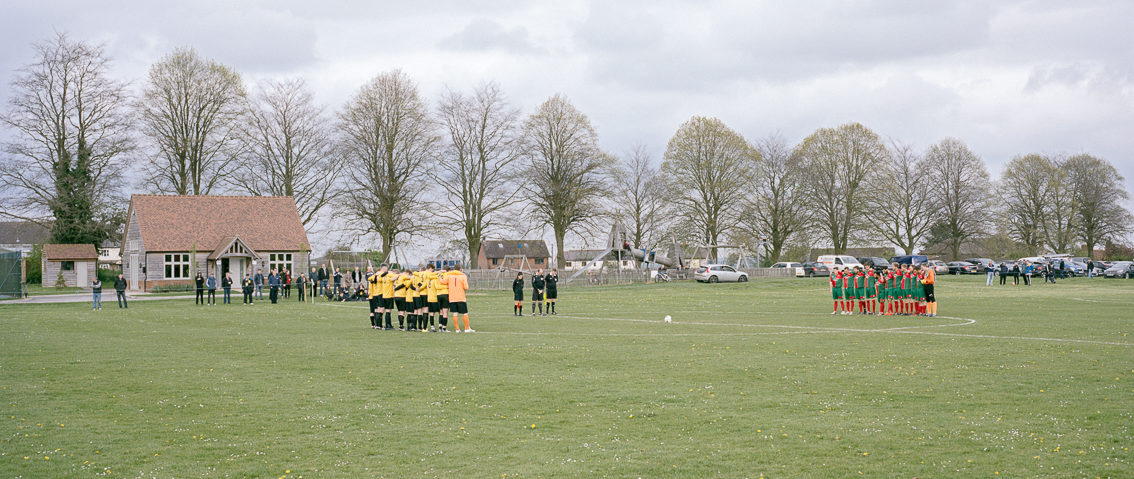Since the fall of 1889, the cup has been contested by the villages within a 12-mile radius of a tiny English village about an hour north of London
Photos by Orlando Gili
Editor’s note: This feature appears in the Fall 2017 issue of Howler. Subscribe here.
A thick fog lingered over the pitch, obscuring the top of the church tower across the lane. In the dressing room, the clack-clack of studs on the tile floor mixed with muffled chatter coming through the ductwork from the other changing room. A cry of “Come on, boys!” followed by three claps of the captain’s hands and I was walking out onto the heavy turf with Oving Football Club for our match against Wingrave.
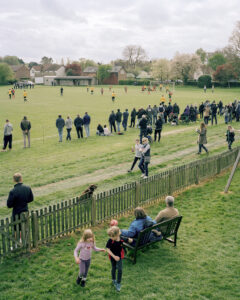
It was the first round of the Oving and District Villages Cup, a title over which amateur football teams in this enclave of rural England have fought since the reign of Queen Victoria. At a meeting held in the Oving Parish Schoolroom on Friday, September 6, 1889—one year after the Football League was established at the Royal Hotel in Manchester—the locals created something less ambitious but equally enduring: a knockout competition open to village teams within a 12-mile radius of Oving.
Oving lies six miles north of Aylesbury, which is 60 miles north of London, in the county of Buckinghamshire, but it feels a world away from the capital. The villages that participate in the Oving Cup punctuate miles of rolling countryside linked by a web of country roads. Down the hill to Whitchurch, a left turn toward Cublington, right at the crossroads by the pond, through Aston Abbotts, down the hill, across the main road, and up to Wingrave—that was my route to the match in November 2012.
We lost to Wingrave 4–1. It wasn’t close. Yet I felt a vague connection to the Oving men who made it all the way to the first cup final, where they had faced Long Crendon in the crisp sunshine of Easter Monday 1890. The match took place at Waddesdon, roughly equidistant between the two participating villages, in front of some 400 spectators. The Bucks Herald, our local newspaper, wrote gushingly of “a splendid game” notable for “the great keenness and esprit de corps shown by the players.” In that, at least, our Oving team remained true to form.
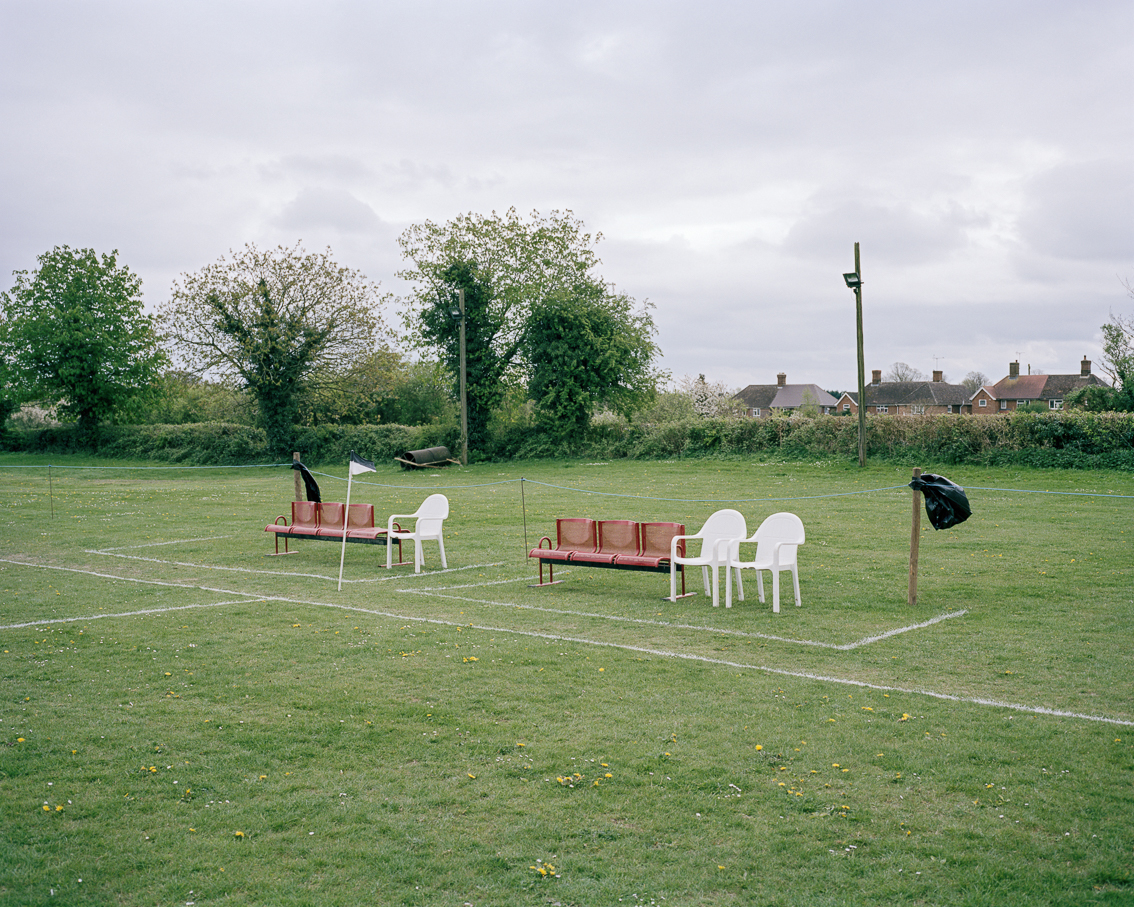
Since the first pig’s bladder was kicked in 1889, only the residents of a village have been allowed to represent that village’s team. (I grew up in a building that used to be a pub called The Old Butchers Arms, on Dark Lane in Oving.) The rule was introduced to exclude the pupils and tutors of Schorne College—a seminary one mile down the hill from Oving that closed in the late 1920s—from suiting up for the village of North Marston. Even without the priests-in-training, North Marston dominated the early years of the Oving Cup, winning five times by the turn of the 20th century. “Probably there is no village of 600 inhabitants able to put such a team on the field … anywhere,” trumpeted the Bucks Herald in 1892.
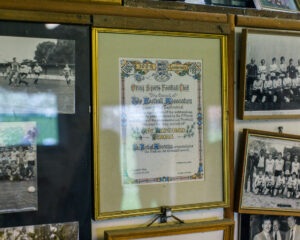
Perhaps the faithful could be counted upon to observe the strict eligibility rules, but the inhabitants of Bierton proved less trustworthy. In 1937, the organizing committee ordered Bierton FC to produce a birth certificate for a player of questionable eligibility. The club refused, withdrew from the competition, and then appealed to the Football Association. The appeal was dismissed. The following year, in 1938, the Biertonians defeated Waddesdon 5–3 in the first round of the cup, but Waddesdon successfully protested the eligibility of Jarvis, Bierton’s trainer, a former professional for Queens Park Rangers and Cardiff City. He was not registered as a player but had inserted himself on the wing anyway. After losing the subsequent replay, Bierton lodged a counterprotest against the eligibility of Cripps, Waddesdon’s inside right.
Bucks Herald columnist John Blunt grew tired of teams “playing Peeping-Tom” against their neighbors. “I’m going to tell the Oving Cup participants that if they don’t very soon alter their rules they’re jolly well going to be the laughing stock of local soccer,” he predicted. The debacle reached the relative notoriety of the Bucks Herald front page, where it was suggested that—gasp!—the future of the Oving Cup “might hang in the balance,” and Bierton eventually withdrew from the competition for the second consecutive year.
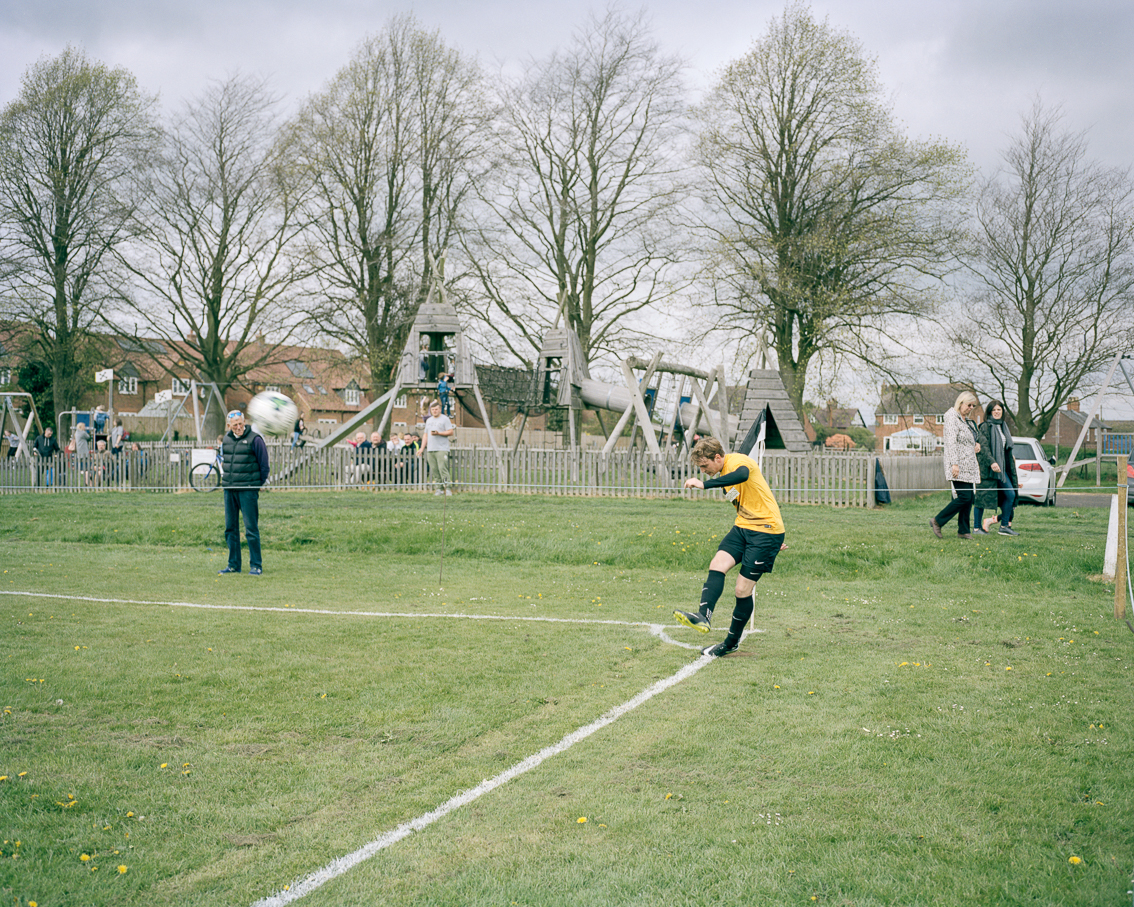
Cup finals always take place on Easter Monday. Throughout my childhood, the final brought the holiday to a thrilling close. My earliest memories have little to do with football; I would make the 10-minute walk to the recreation ground thinking about the bouncy castle and the strong possibility that my dad would buy me a burger. I was intrigued by the groups of lads drinking cans of lager on the touchline, cheering on their mates. And as I grew up, I began to appreciate the ritual of the competition.
Those of us who grew up in Aylesbury Vale were fed a romanticized version of the history of the tournament, aka the second-oldest cup competition in the world (it’s not). Local folklore insisted that the Oving Villages Cup would take precedence over the FA Cup if ever the fixtures conflicted (it wouldn’t). These claims are untrue, but they are widely accepted and often repeated at the bar of The Black Boy, our village pub since the 16th century.
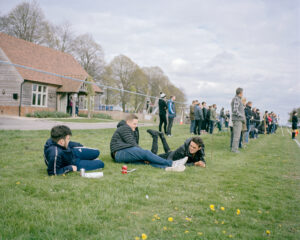
The residents of Aylesbury Vale were hooked from the beginning. In 1891, the Bucks Herald reported that the final between Long Crendon and North Marston unfolded “before a large concourse of supporters” that “lustily cheered on both sides.” The first two finals were contested at Waddesdon. Thereafter, with the exception of the war years, the final has taken place at the Oving Recreation Ground, an expansive pitch overlooked by seven towering copper beech trees. A report in the local paper implies that spectators at the 1891 final encouraged both teams to contest a fair and entertaining match. But over the next decade, this bipartisan approach began to fade.
“The excitement can hardly be described,” reported the Bucks Herald when Waddesdon won the cup for the first time, in 1898. When the triumphant Waddesdon players returned from Oving, “they were met at the entrance to the village by the Old Band and a large crowd of people.” Just as they did for communities in Birmingham and Manchester, the football clubs around Oving became important expressions of local identity.
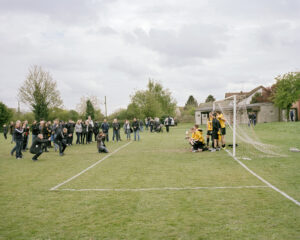
The increasing tribalism played itself out in a tense exchange on the letters page of the Bucks Herald. “An evil which needs to be suppressed” read the title of a letter submitted by F.B. Fells of Aston Clinton Football Club in 1903. A self-proclaimed “humble supporter and admirer of manly sport,” Fells grumbled that supporters at the final between Aston Clinton and Waddesdon “appeared to lose all sense of decency and manliness.” He expressed his outrage at “the most obscene and disgusting expressions” hurled by the Waddesdon supporters and harrumphed that it was no wonder “football in this part of the country receives such a small amount of support from the public.”
The letter simmered for seven days before the paper next went to print. When it returned, Waddesdon had found its defender in the form of W.H. Gilson, who unsheathed his fountain pen to quip that “such good natured abuse is incidental to the heat and excitement of a keenly fought cup final.” Mr. Fells could have complained to a policeman, Mr. Gilson said; the fact that he had not done so suggested the Aston Clinton man was “willfully exaggerating the facts of the case.” Gilson signed off with the generous hope that “football be supported as loyally and ardently in Aston Clinton as it is in the neighbouring village of Waddesdon.”
Whatever discomfort arose from the growth of partisan support as the cup passed out of its teenage years, this period also saw more coverage of the competition and the introduction of support from traveling fans.
The 1913 final between Quainton and Wingrave attracted “two or three thousand.” The competition paused as Britain entered the Great War, and when it returned, so did the crowds. The 1920 final, the first in six years, attracted 2,500 people. During the interwar period, attendances for the final settled at around 2,000—an impressive number considering Oving’s population at the time of about 350.
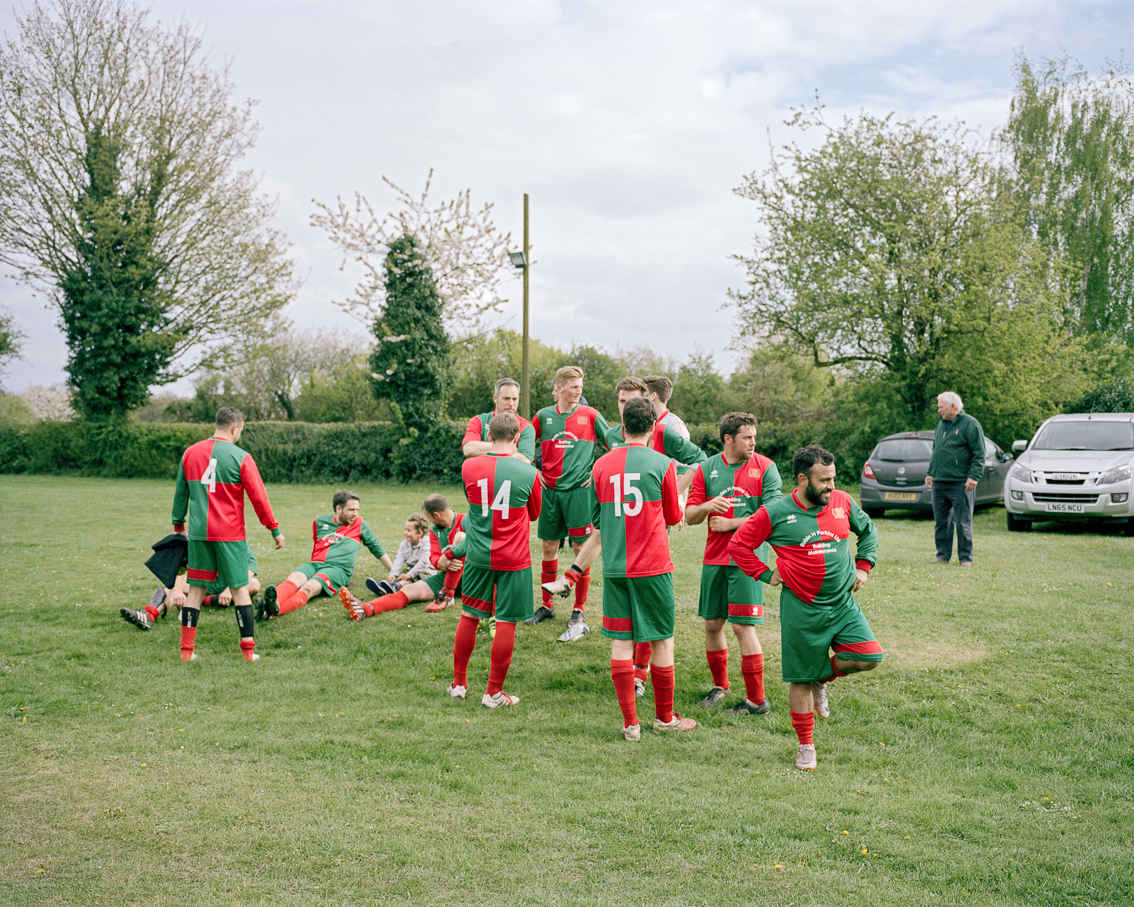
The local paper makes no mention of away support until the early 1920s, when motor travel made it possible for villagers to traverse the vale for matches at earlier stages of the competition. A newspaper advertisement in 1930 included a price for parking: one shilling. Five years later, ahead of an Easter Monday derby between Wing and Wingrave, the match flyer mentioned that “frequent buses will run from Wing to Oving.”
By 1950, Aston Clinton had recovered from the effrontery that had so offended Mr. Fells nearly half a century before and emerged as a powerhouse in the competition. The village reached the final with the aim of lifting the trophy for a third consecutive year, and the Bucks Herald stated that “local support is now so keen that Aston’s number one problem is how to transport almost the entire village population to Oving on Easter Monday.” The final that year was “a typical Oving Cup day with cars pulled up close to the touch-lines, supporters’ coaches, favours, even bugles.”
Two years later, the Bucks Herald described the final between Haddenham and Wingrave as a “battling biff-bang.” It is a shame that this corking alliterative phrase, best imagined in the voice of a prim 1930s BBC newsreader, has faded from modern use. Actual battles between supporters were scarce. Only once did the Bucks Herald report a serious bout of fisticuffs at a cup final before the Second World War: In May 1930, four men were accused of breaching the peace at the Oving Cup final by settling an argument with their fists. The ruffians were summoned to stand before magistrates in Winslow, a local market town. Only one turned up. He proceeded to complain that he had received “five bangs in the gob” and was duly dismissed. The absent three were fined 10 shillings each.
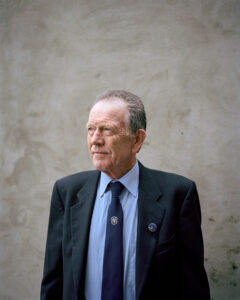
Intervillage rivalries became more serious after the war. As a teenager in 1966, Jim Styles became the secretary of the committee that organizes the cup and held the position for 33 years. As I sit in his dining room in Quainton, a smile flickers across his face as he tells me about the men from whom he took over—apparently they were known to get together at The Red Lion in Aylesbury to divide the substantial gate receipts between themselves. Jim’s youthful colleagues, he says, were “people who were workers, not drinkers.” Together, they reinvigorated the competition and instilled a sense of professionalism. By 1976, the committee was financially prudent to the extent that it invested £50 in premium bonds.
Some practices were harder to change. Jim and the committee still struggled against teams fielding ineligible players. In the late 1950s, the committee had expanded the rules to allow nonresidents who had represented a village in at least 12 league games in each of the previous two seasons. However, without computerized records, this became a source of controversy.
“That bloomin’ Aylesbury guy, who should have kept the results cards, wouldn’t keep them,” chuckled Jim, referring to Bob Mabbutt, the results secretary of the Aylesbury and District League—who happened to be the grandfather of former Tottenham and England defender Gary Mabbutt. “He would dig a trench for his runner beans and throw in all the results cards.”
Most of the matches blur together in Jim’s memory, but the games that saw trouble on the sidelines remain distinct. Sometimes, he said, “it really kicked off!”
“There was a motorcycle chain chucked onto the pitch, a big ring spanner about this long,” he said, pulling his hands 10 inches apart. Evidently, rural Buckinghamshire was not immune from the country’s broader societal problem of hooliganism. The largest single expenditure by the committee in 1968—£23.18—was the cost of hiring police for that year’s final.
Jim’s village has its own cursed place in cup folklore. Quainton last won the Oving Cup in 1940. According to Jim, the townspeople “celebrated so much on Easter Monday night that the following Sunday, the vicar stood at the pulpit in the parish service and prayed to God that Quainton would never win it again, and we haven’t.”
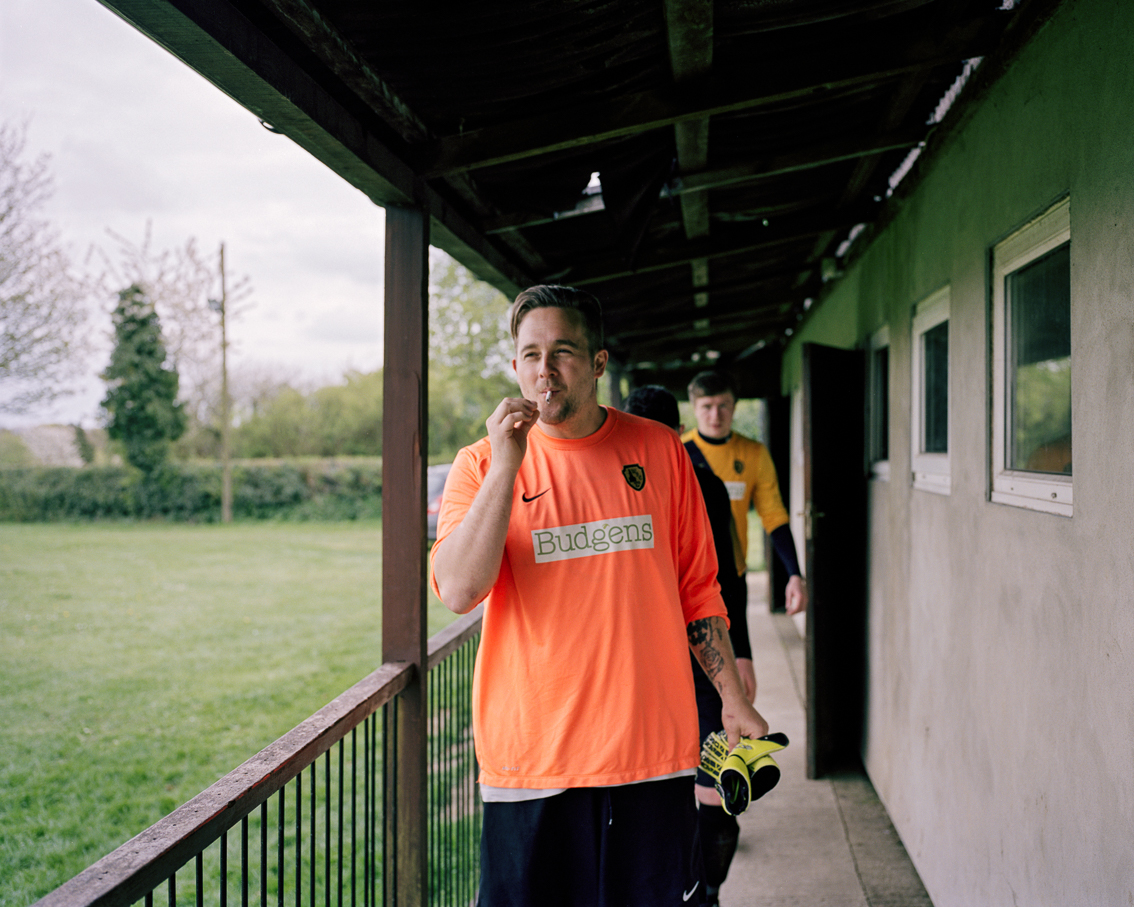
Oving Football Club is conspicuously absent from the annals of the cup that bears its name, having won it on just a single occasion, in 1908. That final, a 3–1 victory over Quainton, warranted just 27 words in the Bucks Herald. The Os did not reach the final again for 74 years, losing to Long Crendon in 1982.
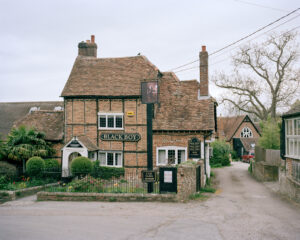
In 2016, Oving reached its second final in a century. Michael Bowen and Pat Hurst donned the black-and-white stripes of Oving in that game, and when I meet them at The Black Boy pub, where the 1896 Oving team sat down for “a capital meat tea” after its Easter Monday final defeat to Wendover, we eschew both in favor of three ales in the beer garden overlooking a gentle northward slope.
“It’s not like every other game, where you turn up probably having had a few beers on the Friday night,” said Pat, who, at 24, is two years younger than Michael. “It’s actually ‘We can win something here and write a bit of history.’”
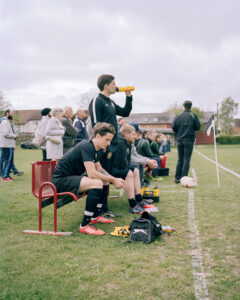
Oving was the underdog, as usual. In 1892, the Bucks Herald commented that “Oving is severely handicapped in coming in to competition with more populous places.” The eligibility rules have perpetuated the disadvantage. Oving has grown by about 100 people since the cup began; Wendover entered the competition in 2016–17 with a population more than 10 times larger. Or as Pat put it: “Wendover has a Tesco Express.”
Tesco and everything it heralds notwithstanding, the pool of eligible players has shrunk markedly. “The demographics have all changed,” said Jim Styles. “They get to 18 and go to university, get a job, and you never see them again.” It is increasingly rare for several generations of the same family to reside in a village. This has caused the number of participating teams to decline. At its peak in the mid-1970s, the cup had 27 clubs from eight different leagues. Around 10 teams have participated each year of the past decade.
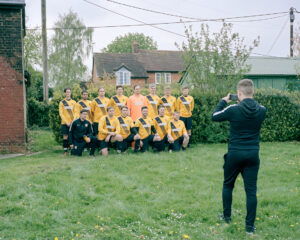
“The competition has been suffering,” admit the organizers in a recent match-day program. Gone are the days when thousands of spectators would flock to Oving for an Easter Monday feast. Yet it remains important to the people who live inside a 12-mile radius around Oving.
The village’s perpetual mediocrity in the competition weighed heavily on Michael and Pat before the final. “I think there was more pressure on us because the village was hyped,” Michael said. “We had everyone coming in here”—The Black Boy—“asking us how it felt to be in the final.” There was no fairy-tale ending, however, and no relief from the 108-year drought. There was not even the traditional Easter Monday atmosphere, as heavy rain forced the final to be rescheduled. When the club eventually played the game, Oving lost 5–0 to Long Marston.

Contributors
Matt McGinn
